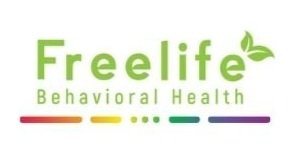“What Is AuDHD?”: Understanding the Overlap Between Autism and ADHD—Especially if You’re Queer
You might be asking yourself, Why does my brain feel like it’s in ten places at once, yet still overwhelmed by too much going on? Or Why do I love socializing—until I suddenly don’t? Or Why do I shut down completely when a plan changes last minute, even though I’m usually pretty go-with-the-flow?
If this sounds familiar, you may be wondering: What is AuDHD? And more importantly, could that be me?
AuDHD is a term used when someone is both on the Autism spectrum and has ADHD. It’s not a made-up label, and it’s not just about having “a mix” of traits. It’s a real experience that brings its own challenges—and its own strengths. Let’s break it down.
Is AuDHD a real diagnosis?
Here’s the deal: “AuDHD” isn’t yet an official clinical diagnosis, but the combination is very real. ADHD (Attention-Deficit/Hyperactivity Disorder) and Autism Spectrum Disorder are two different neurodevelopmental conditions—and yes, you can have both.
In fact, research shows that the overlap is common. Some estimates say up to 30–80% of people with autism also meet the criteria for ADHD. Still, many providers overlook the possibility, especially if someone doesn’t fit the stereotypes.
So while your doctor may not write “AuDHD” on a piece of paper, the experience is very real. And knowing you have AuDHD can help make sense of why life feels a certain way—why tools for ADHD sometimes don’t work, and why autism support alone doesn’t always cover it.
How does AuDHD differ from ADHD?
ADHD alone usually shows up as difficulty with focus, impulsivity, and hyperactivity. But what is AuDHD when you add autism into the mix? It’s a constant back-and-forth between:
Craving stimulation (ADHD) but getting overwhelmed by it (autism)
Needing structure (autism) but struggling to stick to it (ADHD)
Wanting social connection (ADHD) but getting worn out by it (autism)
Having big feelings (ADHD) but struggling to express them (autism)
Because of this overlap, people with AuDHD often burn out faster, mask more, and feel misunderstood even by professionals. They might be told they’re “too sensitive,” “too scattered,” or that they “just need to try harder.” None of that is helpful—and it’s definitely not accurate.
What does AuDHD look like in girls and AFAB individuals?
Girls and AFAB folks (or folks assigned female at birth)—especially those raised to be “nice” and put others first—are often diagnosed much later, if at all. AuDHD in AFAB folks is often missed because it doesn’t look like the loud, bouncing-off-the-walls image people associate with ADHD. And when autism presents subtly—through routines, masking, or internal anxiety—it flies under the radar.
Here’s what AuDHD might look like in AFAB individuals:
Daydreaming, perfectionism, or zoning out instead of hyperactivity
Being extremely sensitive to texture, sound, or social tension
Rehearsing conversations or mimicking others to “pass” as neurotypical
People-pleasing or masking to avoid rejection—even when it’s exhausting
Hyperfixating on hobbies, pop culture, or causes as safe outlets
Many AuDHD folks are also queer, which adds another layer of invisibility. If you’ve never seen yourself reflected in neurodivergent or LGBTQ+ stories, it’s easy to think you’re just “doing life wrong.” You’re not. You’re trying to live authentically in a world that wasn’t built with you in mind.
How can I tell if I’m AuDHD?
You don’t need a checklist to prove you’re struggling. But if you’re still wondering, here are a few signs:
You relate to both ADHD and autistic traits—but don’t fully fit either category on its own
You constantly bounce between hyperactivity and shutdown
You’re sensitive to rejection but also find social interaction draining
You have trouble starting tasks, and even more trouble switching between them
Routines help, but sticking to them is incredibly hard
You’ve been masking for so long that you’re not sure who you are underneath
Still unsure? That’s okay. Part of the AuDHD experience is constantly questioning yourself—and needing support that sees the full picture.
So…what now?
Understanding what AuDHD is for you can be validating, but it can also bring grief. Maybe you wish you’d known earlier. Maybe you’re trying to explain it to your family. Maybe you’re still figuring out where queerness fits into all of this.
You don’t have to go it alone. Therapy that affirms both neurodivergence and queerness can help you stop overexplaining, start healing, and build routines that actually work for your brain.
Work with a therapist who gets it
If you’re exploring your identity, untangling burnout, or trying to understand what AuDHD is for your day-to-day life, Freelife Behavioral Health can help. Our therapists understand the overlap of autism, ADHD, and queerness—and they create space for you to be fully seen.
We especially recommend working with Julleon Garrison, LCSW, a therapist at Freelife Behavioral Health who specializes in supporting queer, neurodivergent, and BIPOC clients. He’s not going to ask you to tone it down or be more “normal.” He’s going to help you understand yourself, your needs, and how to create a life that feels right for you.
Book a session with Julleon or explore the full team atFreelife Behavioral Health to find a therapist who feels like a good fit.
